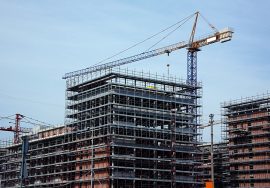
Indoor Air Quality: Creating Healthier Living Spaces
Indoor Air Quality: Creating Healthier Living Spaces
When we think about pollution, most of us imagine traffic and smog-filled city streets. However, the air inside our homes and offices can often be more polluted than the air outside. That’s why maintaining indoor air quality is essential for health, comfort, and productivity — especially in modern, airtight buildings.
As sustainable construction grows in India, indoor air quality has become a critical focus for architects, engineers, and homeowners alike. Good air quality not only ensures a healthier living environment but also supports energy efficiency and green building standards.
What Is Indoor Air Quality?
Indoor air quality (IAQ) refers to the condition of the air within and around buildings, especially as it relates to the health and comfort of occupants. Poor indoor air quality can result from pollutants such as dust, mold, volatile organic compounds (VOCs), carbon monoxide, and inadequate ventilation.
Maintaining healthy indoor air quality involves controlling pollutant sources, ensuring proper ventilation, and using materials and systems that reduce contamination.
Why Indoor Air Quality Matters
1. Protects Health
Poor air quality can cause respiratory issues, headaches, fatigue, and allergies. In the long term, it may lead to serious conditions like asthma or cardiovascular diseases. Ensuring clean air protects the health and well-being of occupants.
2. Enhances Comfort and Productivity
Good air quality creates a more comfortable environment by regulating humidity, temperature, and airflow. Studies show that employees working in spaces with clean air are more focused, productive, and satisfied.
3. Supports Green Building Certification
Sustainable design programs such as LEED and IGBC include indoor air quality as a key performance indicator. Buildings that maintain superior air quality often qualify for higher certification levels.
4. Reduces Energy Consumption
Efficient ventilation and air filtration systems improve indoor air quality while optimizing energy use. This balance ensures buildings are both healthy and environmentally responsible.
Common Causes of Poor Indoor Air Quality
Several factors can degrade indoor air quality, especially in modern airtight constructions:
-
Lack of ventilation: Insufficient airflow traps pollutants indoors.
-

How to Improve Indoor Air Quality
1. Use Eco-Friendly Building Materials
Choosing green materials with low VOC content reduces the release of harmful chemicals. Paints, sealants, and flooring certified for air quality safety contribute to healthier interiors.
2. Ensure Proper Ventilation
Cross-ventilation, natural airflow, and mechanical ventilation systems play vital roles in maintaining air quality. Energy Recovery Ventilators (ERVs) and air purifiers can enhance air exchange efficiency.
3. Install Smart Building Systems
Smart building technology allows real-time monitoring of air quality through sensors that track temperature, humidity, and pollutants. These systems automatically adjust airflow to maintain optimal air conditions.
4. Incorporate Plants Indoors
Indoor plants like peace lilies, spider plants, and areca palms help absorb toxins and improve air quality naturally. They also add beauty and calmness to indoor spaces.
5. Maintain HVAC Systems Regularly
Dirty filters and ducts can harbor allergens. Regular maintenance ensures clean air circulation and sustained air quality throughout the year.
Indoor Air Quality Standards in India
India’s focus on healthy and sustainable construction has led to the introduction of air quality standards by organizations like the Bureau of Indian Standards (BIS) and Central Pollution Control Board (CPCB).
Many new projects follow the National Building Code (NBC) guidelines for ventilation and air purification to maintain acceptable air quality levels.
For more information about national standards and environmental initiatives, visit the Central Pollution Control Board (CPCB) — India’s regulatory body for pollution monitoring and control.
Implementing Indoor Air Quality in Your Project
If you’re designing or managing a construction project, prioritizing air quality can significantly improve occupant well-being and sustainability. Key steps include:
-
Selecting low-emission materials and finishes.
-
Incorporating natural ventilation and energy-efficient HVAC systems.
-
Using indoor air quality sensors for real-time monitoring.
-
Integrating green roofs or solar panels to complement sustainable design.
-
Scheduling regular maintenance and air testing.
To learn how to integrate advanced air quality systems into your building design, contact AMS India. Their experts specialize in sustainable construction and environmental control systems.
Conclusion
Maintaining high air quality is essential for building healthier, more sustainable environments. From reducing pollutants to improving comfort and productivity, clean indoor air benefits both people and the planet.
As India continues its journey toward smarter, greener cities, focusing on air quality in construction will be key to ensuring well-being and sustainability for generations to come.
Read more related articles to enhance your knowledge and make informed decisions
Cost-Effective Modular Construction: Fast, and Sustainable Building Solutions
Smart Modular Buildings: Innovative, Efficient, and Sustainable Construction








